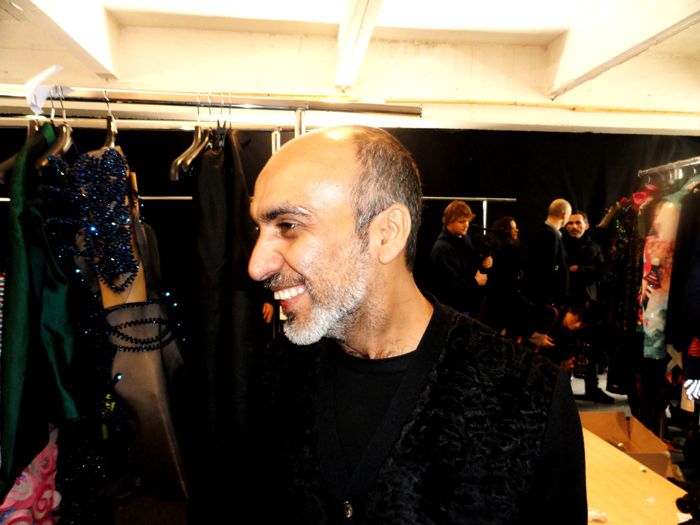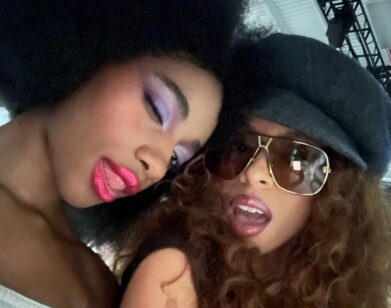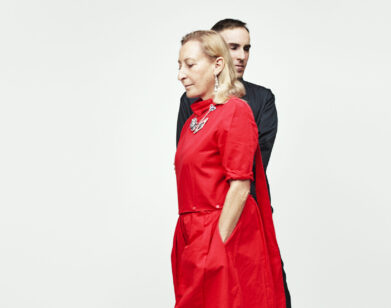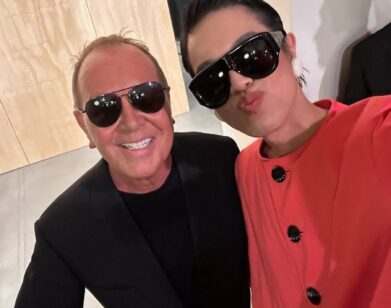Between the Shows: Q+A With Manish Arora

PHOTOS BY AMINA NOLAN
Not only is Manish Arora the only Indian designer to have skyrocketed through the French fashion scene—today, with front-row endorsements ranging from Suzy Menkes to Kanye West, it’s safe to say he has been adopted by worldwide fashion fiends.
Arora’s designs, bearing traditional Indian embroidery and a baroque, decadent style, recently got him elected as Paco Rabanne’s new head designer. His show in Paris this morning bridged the two houses: wild and worldly, mature and mental, including a magician making pink-haired models appear in cages to the beat of M.I.A’s “Born Free,” and boldly feminine, New Look-esque silhouettes.
We met him backstage seconds after the show, talked about India and having fun whilst growing into maturity.
ALICE PFEIFFER: How do you feel about your new role at Paco Rabanne ?
MANISH ARORA: As you know, my first show for Paco Rabanne is next season so I haven’t started yet. I can’t reveal anything about it right now, so you’ll have to wait and see! But I think I am ready for it. I’ve shown eight collections in Paris and I think it is the perfect timing for me to take on such a role.
PFEIFFER: You use a lot of embroideries in your work. Do you trace that specifically to your roots?
ARORA: Of course, because I’m from India! If I don’t do it, who will? I think designers from Europe or America can’t do such embroideries. I’m proud to be good at it and to be the only designer who shows here.
PFEIFFER: Your collection seems to be designed for a more mature audience.
ARORA: It’s true, this collection is for a woman, not a girl. I wanted something still fun and happy, yet sophisticated: deeper colors, techniques more obvious on the inside than outside, that you can’t see until you really touch and wear the clothes. Think of it like an upgrade from economy to business.
PFEIFFER: Your collections are always very colorful, despite showing in monochrome Paris. Why is that?
ARORA: Fashion should be dramatic—what’s the point of wearing something black and getting lost in the crowd? Fashion should make you stand out, not the opposite. This applies to fashion shows, too. You can show and entertain at the same time.
PFEIFFER: Some pieces are almost like sculptures; what techniques did you use?
ARORA: A lot of the pieces needed very complicated technology, had to be laser cut, made out of special fabric, and shipped from India. Worth the result, I hope!
PFEIFFER: How do Indian women inspire you and your designs?
ARORA: Indian woman are probably amongst the most feminine without knowing it—they are not aware of their looks and that’s very beautiful to me. That’s what I like to do with my clothes.
PFEIFFER: What fascinates you today?
ARORA: Fantasy. Fantasy never ceases to fascinate me.






